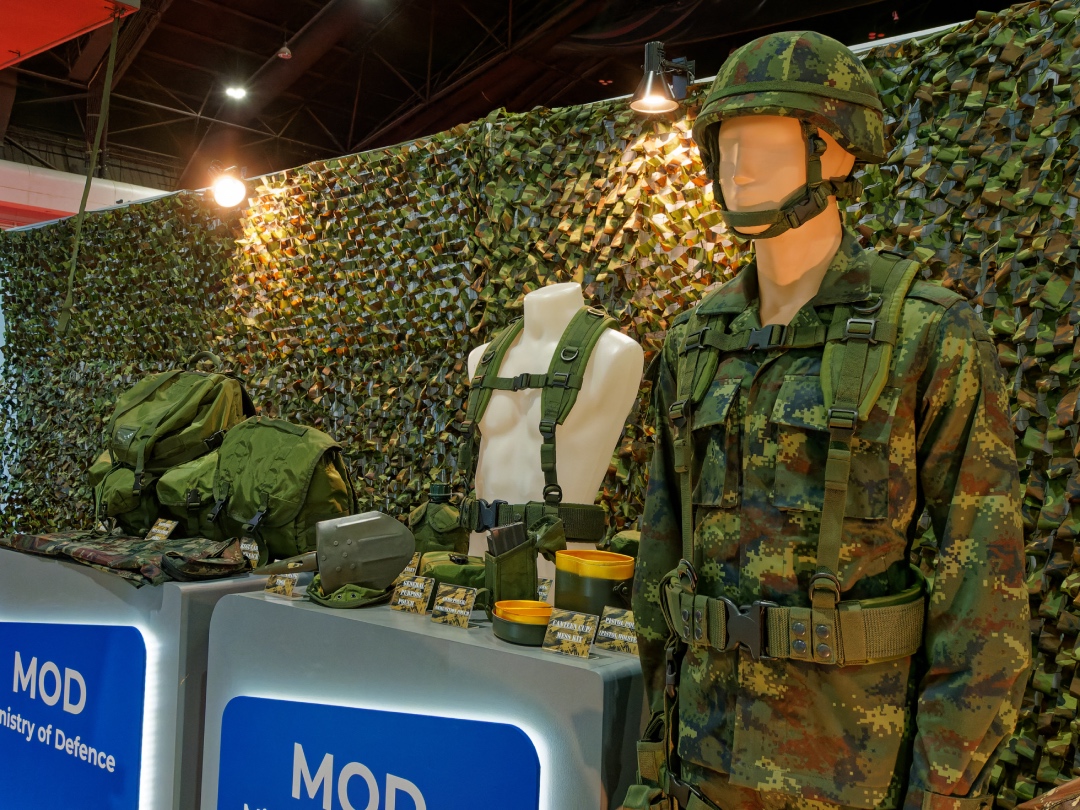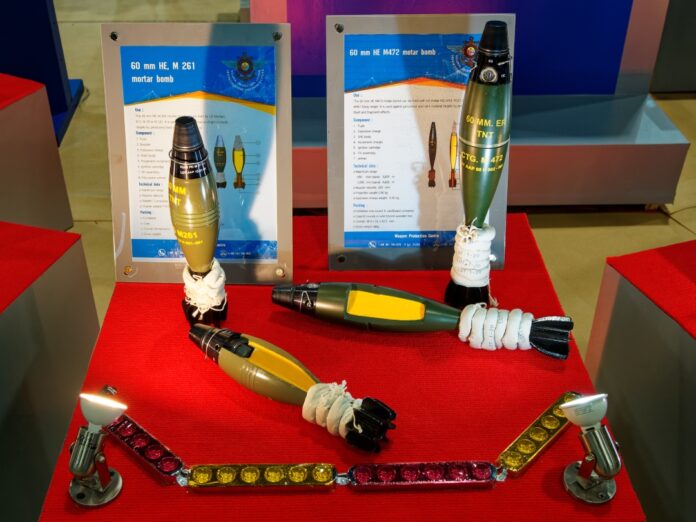The Royal Thai Army (RTA) used the 2022 edition of the Defense & Security exhibition to unveil a broad range of in-house initiatives, which are aimed at reducing its reliance on foreign supply for some of its critical functions.
Using precision manufacturing technology supplied by Germany’s Fritz Werner, the RTA’s Weapon Production Centre (WPC) has produced several mortar and artillery ammunition types, including 60mm high-explosive (HE) M261 and 81mm HE M262 mortar bombs, 120mm HE M293 mortar bombs, as well as 105mm HE M1 howitzer, 155mm M107 medium-curved artillery, and 155mm HE extended-range base bleed (ERFB-BB) and ERFB-Boat Tail (ERFB-BT) rounds.
The WPC is also locally producing the 105mm high-explosive squash head-tracer (HESH-T) M156 cartridge for L7 or M68-type guns. Propellant and charges for these mortar and artillery ammunition are also locally supplied by the RTA’s Military Explosives Factory.
The RTA has also started operating a new factory to produce 5.56 mm ball ammunition. Based in the northeastern province of Nakhon Ratchasima, the production facility – worth around US$84 million and built with the support of what is believed to be China North Industries Group Corporation (NORINCO) – has the capacity to manufacture approximately 50 million rounds a year.
The new ammunition manufacturing capabilities are a major part of the RTA’s efforts to build self-reliance and introduce greater efficiencies in producing and procuring critical defence equipment. The service has in the past relied largely on imported ammunition from suppliers in China, India, Israel, and Pakistan.
Meanwhile, the RTA’s Quartermaster Department is rolling out new individual field equipment for troops, including a new ballistic helmet and vest, load bearing vests and utility belts, field packs and ammunition pouches, and other accessories.

“The new line of field products for our soldiers are designed to replace ageing equipment and are locally made with modern materials and designed to be more ergonomic and durable,” an RTA spokesperson told AMR, noting that the new equipment is expected to be rolled out in 2023.
The Quartermaster Department has also developed a new mobile kitchen system based a 4×4 all-wheel drive truck. Only recently operationalised around early 2021, the mobile kitchen is a self-contained vehicle that can travel to austere environments to provide food for troops and civilians.

“It has been designed to not just support military training and field operations, but also humanitarian assistance and disaster relief (HADR) interventions especially floods which are prevalent in Thailand,” the spokesperson explained, pointing out the that the vehicle can ford up to 0.8 m of water to reach affected areas.
Besides a large 105 litre pressure cooker that features thermal oil heating technology for speedy preparation of rice, the mobile kitchen is also equipped with three stoves, a refrigerator, and can carry up to 200 litres of fresh water. Four gas canisters provide the necessary fuel for the cooking stoves and can be easily replaced using the on-board gantry crane. Taken together, a fully stocked mobile kitchen system can potentially feed up to 400 people.
“The mobile kitchen is capable of preparing almost every conceivable kind of Thai cuisine within minutes of coming to a stop and deploying,” said the spokesperson.
by Jr Ng











